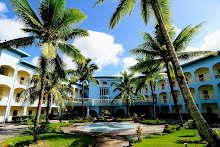
Palau's early history is still largely veiled in mystery. Why, how or when people arrived on our beautiful islands is unknown, but studies indicate that today's Palauans are distant relatives of the Malays of Indonesia, Melanesians of New Guinea and Polynesians. As for the date of their arrivals, carbon dating of artifacts from the oldest known village sites on the Rock Islands and the spectacular terraces on Babeldaob place civilization here as early as 1,000 BC.
The most noteworthy first foreign contact took place in 1783 when the vessel Antelope, under the command of English Captain Henry Wilson, was shipwrecked on a reef near Ulong, a Rock Island located between Koror and Peleliu. With the assistance of Koror's High Chief Ibedul, Wilson and his men stayed for three months to rebuild his ship. From that time onward, many foreign explorers called on Palau, and the islands were exposed to further European contact.
Foreign governance of our islands officially began when Pope Leo XIII asserted Spain's rights over the Caroline Islands in 1885. Two churches were established and maintained by two Capuchin priests and two brothers, resulting in the introduction of the Roman alphabet and the elimination of inter-village wars. In 1899, Spain sold the Carolines to Germany, which established an organized program to exploit the islands' natural resources.
Following Germany's defeat in WWI, the islands were formally passed to the Japanese under the 1919 Treaty of Versailles. The Japanese influence on the Palauan culture was immense as it shifted the economy from a level of subsistence to a market economy and property ownership from the clan to individuals. In 1922, Koror became the administrative center for all Japanese possessions in the South Pacific. The town of Koror was a stylish metropolis with factories, shops, public baths, restaurants and pharmacies.
Following Japan's defeat in WWII, the Carolines, Marianas and Marshall Islands became United Nations Trust Territories under U.S. administration, with Palau being named as one of six island districts. As part of its mandate, the U.S. was to improve Palau's infrastructure and educational system in order for it to become a self-sufficient nation. This finally came about on October 1, 1994, when Palau gained its independence upon the signing of the Compact of Free Association with the United States.
